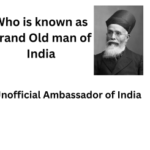Rajya Sabha passes Bill to remove Bhogta caste from SC list: Basics Explained

The Rajya Sabha on Wednesday passed a Bill that seeks to remove the Bhogta caste from the list of Scheduled Castes (SCs) in Jharkhand and include certain other communities in the list of Scheduled Tribes (STs) for the state.
The Bill amends the Schedule to the ST Order to include communities such as Deshwari, Ganjhu, Dautalbandi (Dwalbandi), Patbandi, Raut, Maajhia, Khairi (Kheri), Tamaria (Tamadia), and Puran in the list of STs in Jharkhand.
LEARNING FROM HOME/WITHOUT CLASSES/BASICS
Article 341
(1) The President [may with respect to any State 3 [or Union territory], and where it is a State, after consultation with the Governor thereof, by public notification, specify the castes, races or tribes or parts of or groups within castes, races or tribes which shall for the purposes of this Constitution be deemed to be Scheduled Castes in relation to that State 2[or Union territory, as the case may be.
(2) Parliament may by law include in or exclude from the list of Scheduled Castes specified in a notification issued under clause (1) any caste, race or tribe or part of or group within any caste, race or tribe, but save as aforesaid a notification issued under the said clause shall not be varied by any subsequent notification.
Article 342
342(1) Scheduled Tribes — the President may with respect to any State or Union Territory, and where it is a State, after consultation with the Governor thereof, by a public notification, specify the tribes or tribal communities or part of or groups within tribes or tribal communities as Scheduled Tribe in relation to that State or Union Territory as the case may be.
(2) Parliament may be law include in or exclude from the list of Scheduled Tribes specified in a notification issued under clause (1) any tribe or tribal community or part of or group within any tribe or tribal community, but save as aforesaid a notification issued under the said clause shall not be varied by any subsequent notification.
Article 338
338. Special Officer for Scheduled Castes, Scheduled Tribes etc
(1) There shall be a Special Officer for the Scheduled Castes and Scheduled Tribes to be appointed by the President
(2) It shall be the duty of the Special Officer to investigate all matters relating to the safeguards provided for the Scheduled Castes and Scheduled Tribes under this Constitution and report to the President upon the working of those safeguards at such intervals as the President may direct, and the President shall cause all such reports to be laid before each House of Parliament.
The essential characteristics, first laid down by the Lokur Committee, for a community to be identified as Scheduled Tribes are –
• indications of primitive traits; distinctive culture; shyness of contact with the community at large; geographical isolation; and backwardness
In order to give more focussed attention to the development of Scheduled Tribes, a separate Ministry, known as the Ministry of Tribal Affairs was constituted in October 1999. The mandate of the Ministry includes social security and social insurance with respect to the Scheduled Tribes, tribal welfare planning, project formulation research and training, promotion and development of voluntary efforts on tribal welfare, and certain matters relating to the administration of the Scheduled Areas
The tribal population of the country, as per 2011 census, is 10.43 crore, constituting 8.6% of the total population. 89.97% of them live in rural areas and 10.03% in urban areas.
The decadal population growth of the tribal’s from Census 2001 to 2011 has been 23.66% against the 17.69% of the entire population. The sex ratio for the overall population is 940 females per 1000 males and that of Scheduled Tribes 990 females per thousand males.
Broadly the STs inhabit two distinct geographical areas – Central India and the North-Eastern Area. More than half of the Scheduled Tribe population is concentrated in Central India, i.e., Madhya Pradesh (14.69%), Chhattisgarh (7.5%), Jharkhand (8.29%), Andhra Pradesh (5.7%), Maharashtra (10.08%), Orissa (9.2%), Gujarat (8.55%) and Rajasthan (8.86%). The other distinct area is the North East (Assam, Nagaland, Mizoram, Manipur, Meghalaya, Tripura, Sikkim and Arunachal Pradesh).
There is no ST population in 3 States (Delhi NCR, Punjab, and Haryana) and 2 UTs (Puducherry and Chandigarh), as no Scheduled Tribe is notified.
Among States, Mizoram has the highest proportion of Scheduled Tribes(94.43) and Uttar Pradesh has the lowest proportion of Scheduled Tribes (0.57).
With respect to districts, Kurung Kumey district of Arunachal Pradesh has the highest proportion of Scheduled Tribes (98.58) and Kannauj in Uttar Pradesh has the lowest proportion of Scheduled Tribes (0.0009).





0 Comments